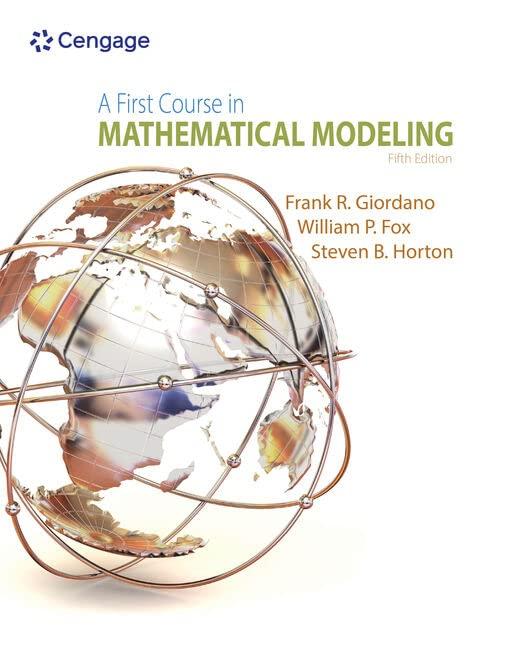Data have been collected on numerous dinosaurs during the prehistoric period. Using proportionality and geometric similarity, build
Question:
Data have been collected on numerous dinosaurs during the prehistoric period. Using proportionality and geometric similarity, build a mathematical model to relate the weight of the terror bird to its femur circumference. Recall that the femur circumference of the terror bird in Example 3 was 21 cm. Compare the weight found using this new model to the weight found in Example 3. Which model would you prefer? Give reasons justifying your preference.
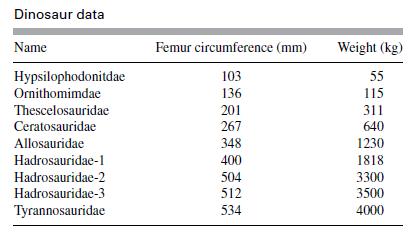
Data from example 3
South America and Africa began to drift apart along the mid-oceanic ridge approximately 80 million years ago. Because of the great tectonic force, South America drifted to the west, away from Africa. During the next 75 million years, South America's flora and fauna evolved in isolation and produced many different plant and animal forms. About 7 million years ago, the Isthmus of Panama arose, connecting South America with North America. This allowed for the interchange of formerly separated species. The interchange enabled animals such as camels, deer, elephants, horses, cats, and dogs to travel south, and the North American fauna received an infusion of mammals such as giant ground sloths, anteaters, and aquatic capybaras. They were accompanied by groups of birds called terror birds. The terror birds were giant, flightless, predatory birds. The terror bird known as Titanis walleri was a fleet hunter that would lie in ambush and attack from the tall grasses. These birds killed with their beaks, pinning down their prey with an inner toe claw 4 to 5 in. long and shredding their prey. These birds had arms (not wings) that were most like those of a bipedal dinosaur. Figure 2.23 shows an artist's rendering of the terror bird. It is the largest predatory bird known to have existed, and paleontologists believe these flightless predatory birds evolved as the dominant carnivores on land.
Figure 2.23
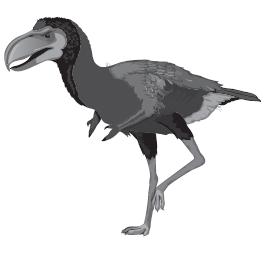
The various terror birds ranged in size from 5 ft to 9 ft tall, Titanis being the largest. Because very little fossil material of Titanis has been discovered, its exact size is unclear. According to a paleontologist who uncovered a fossil of a terror bird femur in 1994 estimated that the bird was between 6 and 7 feet tall. Let's see whether we can use modeling to learn something more about the terror bird.
Problem Identification Predict the weight of the terror bird as a function of the circumference of its femur. Assumptions and Variables We assume that the terror birds are geometrically similar to other large birds of today. With this assumption of geometric similarity, we have that the volume of the bird is proportional to any characteristic dimension cubed.
![]()
If we assume a constant weight density, then the terror bird's volume is proportional to its weight, V ∝ W, and we have:
![]()
Let the characteristic dimension l be the circumference of the femur, which is chosen because it supported the body weight, giving the model:
![]()
Testing the Model, we use the data set for various bird sizes in Table 2.6 for our model. First, we have a data set from birds of various sizes. These data are appropriate because the terror bird was a bird.
Table 2.6
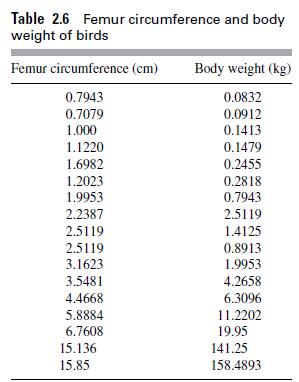
Figure 2.24 shows a scatterplot for Table 2.6 and reveals that the trend is concave up and increasing.
Figure 2.24
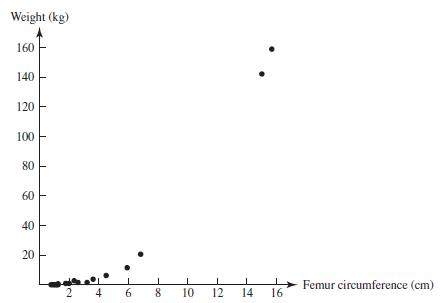
We next plot this model with the original data to visually examine how close the model comes to fitting the trend of the data (see Figure 2.26). Predicting the terror bird's weight using the model W = 0.0398l3 and the circumference of the femur of the terror bird measured as 21 cm, we find that the weight was approximately 368.58 kg. Project 7 in this section gives dinosaur data relating the size (weight) of prehistoric animals to the circumference of their femurs. Completing that problem will enable you to compare the model obtained in Figure 2.26 with a second model based on dinosaur data.
figure 2.26
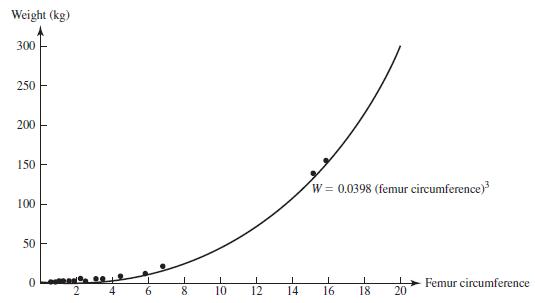
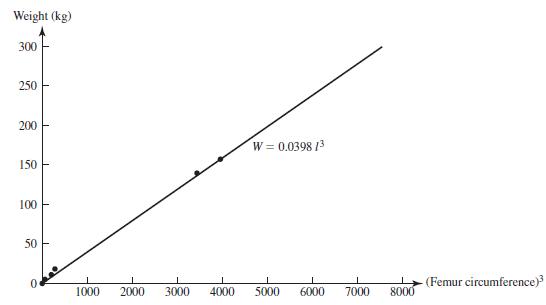
Step by Step Answer:

A First Course In Mathematical Modeling
ISBN: 9781285050904
5th Edition
Authors: Frank R. Giordano, William P. Fox, Steven B. Horton



